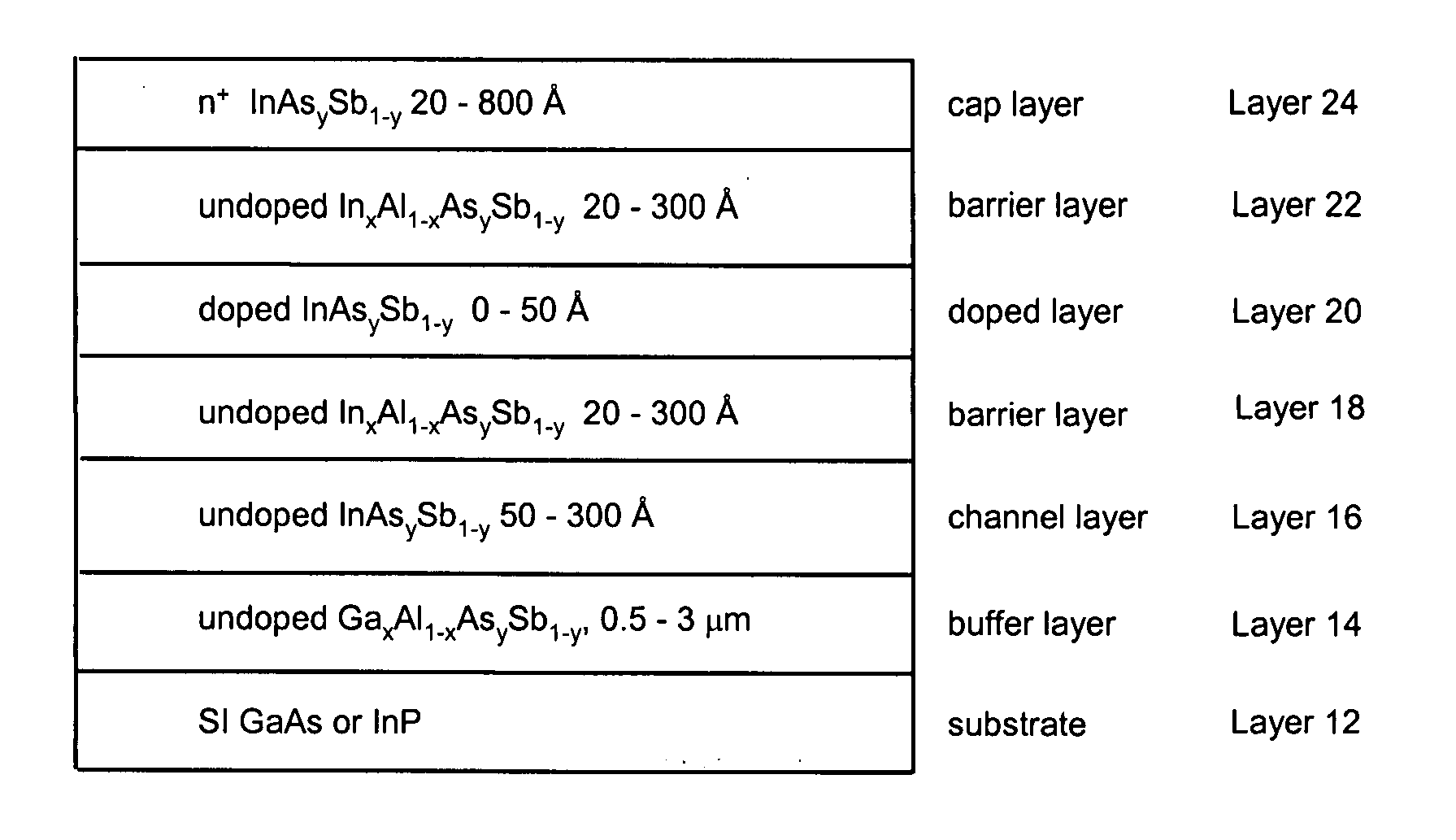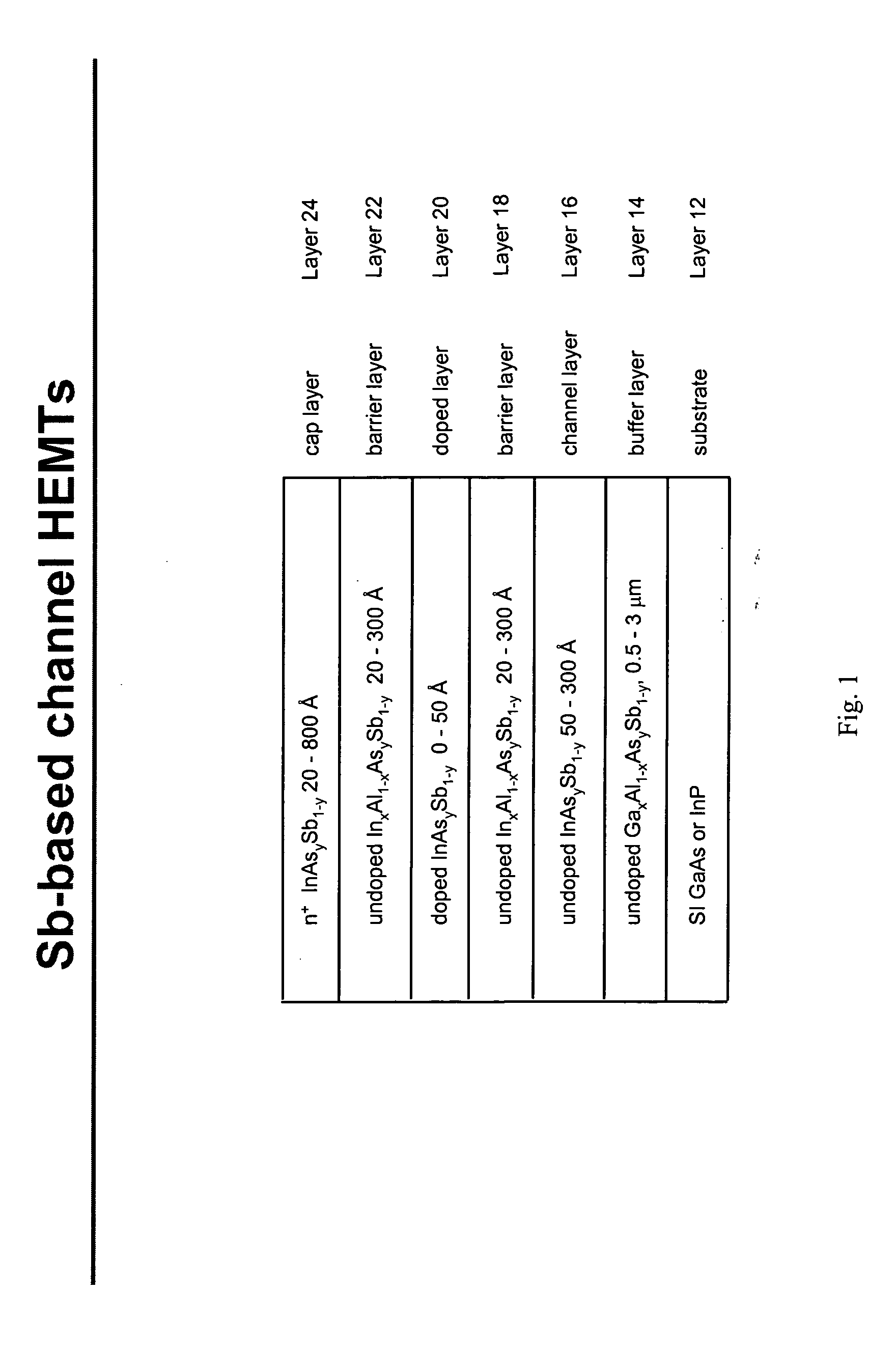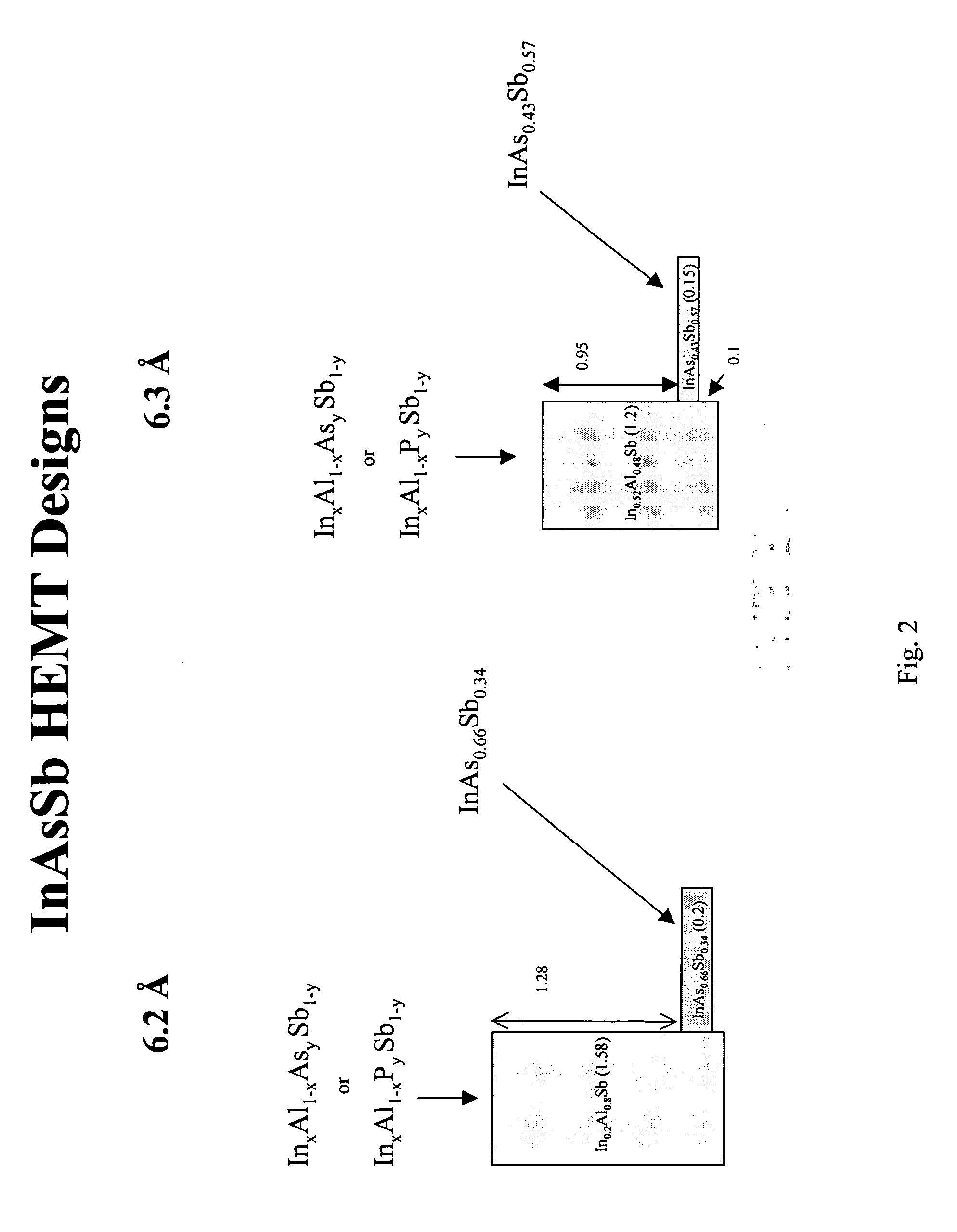High electron mobility transistors with Sb-based channels
a high electron mobility, transistor technology, applied in the direction of semiconductor devices, basic electric elements, electrical apparatus, etc., can solve the problems of increasing the complexity of material growth and device design requirements, increasing the complexity of material growth and fabrication technology of antimony-based hemts, and being susceptible to significant charge control problems. to achieve the effect of increasing operating speeds
- Summary
- Abstract
- Description
- Claims
- Application Information
AI Technical Summary
Benefits of technology
Problems solved by technology
Method used
Image
Examples
Embodiment Construction
[0020] High electron mobility transistors of this invention employ advanced material layer designs that can increase operating speed to over 500 GHz and reduce power dissipation by a factor of at least two. The HEMTs utilize InxAl1−xAsySb1−y, InxAl1−xPySb1−y, or GaxAl1−xAsySb1−y for the barrier layer and InAsySb1−y in the channel. As a result, the devices exhibit improved frequency performance while operating at lower bias voltage.
[0021] More specifically, the HEMTs of this invention include, as shown in FIG. 1, a semi-insulating GaAs or InP substrate 12, buffer layer 14 of undoped InxAl1−xAsySb1−y, InxAl1−xPySb1−y, or GaxAl1−xAsySb−y disposed on the substrate, channel layer 16 through which electrons flow horizontally, as depicted in FIG. 1, of undoped InAsySb1−y disposed on the buffer layer, first barrier layer 18 of undoped InxAl1−xAsySb1−y, InxAl1−xPySb1−y, or GaxAl1−xAsySb1−y disposed on the channel layer, silicon or tellurium-doped layer 20 of InAsySb1−y, InxAl1−xAsySb1−y, In...
PUM
 Login to View More
Login to View More Abstract
Description
Claims
Application Information
 Login to View More
Login to View More - R&D
- Intellectual Property
- Life Sciences
- Materials
- Tech Scout
- Unparalleled Data Quality
- Higher Quality Content
- 60% Fewer Hallucinations
Browse by: Latest US Patents, China's latest patents, Technical Efficacy Thesaurus, Application Domain, Technology Topic, Popular Technical Reports.
© 2025 PatSnap. All rights reserved.Legal|Privacy policy|Modern Slavery Act Transparency Statement|Sitemap|About US| Contact US: help@patsnap.com



